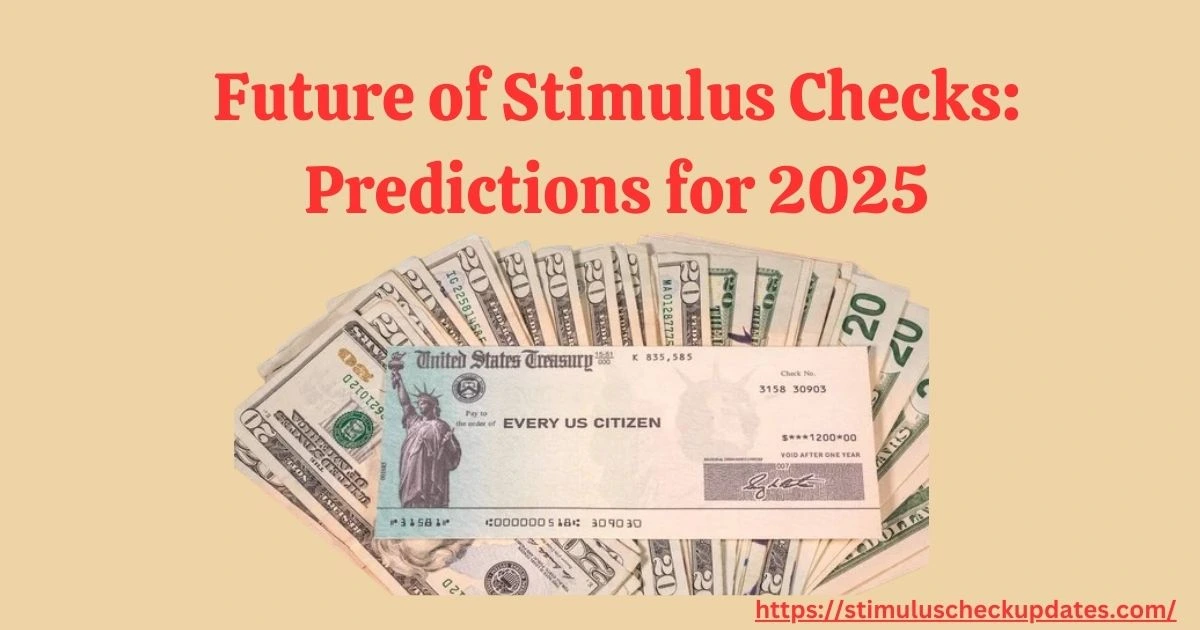The discussion surrounding stimulus checks has been a significant part of the economic narrative in recent years, particularly driven by the COVID-19 pandemic. In this article, we will explore the future of stimulus checks and what to expect by 2025. We will delve into likely economic scenarios, governmental policies, and potential changes that could influence the issuance of stimulus checks.
Introduction to Stimulus Checks
Stimulus checks are direct payments to individuals aimed at stimulating the economy during periods of economic downturn or maintaining consumer spending. Past stimulus checks have been critical in supporting households, providing essential financial relief, and keeping the economy afloat. The structure and frequency of these payments have evolved, and as we look towards 2025, it’s important to analyze upcoming trends.
Historical Context of Stimulus Checks
It’s essential to understand the historical context of stimulus checks, particularly their role during economic crises such as the 2008 financial crisis and the more recent COVID-19 pandemic. In both instances, direct cash payments were implemented to assist individuals and encourage spending.
The COVID-19 Pandemic and Its Impact
During the COVID-19 pandemic, the U.S. government issued multiple rounds of stimulus checks. The economic impact was profound, with financial relief reaching millions of Americans. These measures were deemed essential in combating the immediate fallout from lockdowns and business closures.
- First round: The Coronavirus Aid, Relief, and Economic Security (CARES) Act provided $1,200 checks in April 2020.
- Second round: The December 2020 relief package authorized $600 checks.
- Third round: In March 2021, the American Rescue Plan provided $1,400 checks.
These events have paved the way for future considerations regarding stimulus checks.
Current Economic Landscape
As we approach 2025, it’s crucial to analyze the current economic landscape. Factors such as inflation rates, unemployment levels, and consumer confidence will dictate the necessity and viability of stimulus checks.
Inflation Trends
One of the most pressing issues in 2023 is inflation, which has affected consumer purchasing power. According to the Bureau of Labor Statistics, inflation peaked in recent months, causing concern among policymakers. These rising prices impact how stimulus checks are perceived—will they help or hinder the economy?
Projected Inflation Rates for 2025
Forecasts suggest that inflation may stabilize in 2025, but the lingering effects may still require government intervention. Analysts predict that inflation will hover around 2% to 3%, which is conducive to maintaining consumer spending without eroding the value of stimulus checks.
Unemployment Rates
Unemployment rates have fluctuated post-pandemic, reflecting the labor market’s recovery. As of late 2023, the unemployment rate is around 4%. Predictions for 2025 show that if the economy continues on its recovery trajectory, this rate could improve, thus shifting the conversation around stimulus checks.
Understanding the Stimulus Check Application Process 2025
Government Policies and Legislative Changes
Government policies regarding stimulus checks play a pivotal role in shaping monetary assistance. Discussions within Congress frequently center around fiscal responsibility versus the need for immediate financial relief.
Budgeting for the Future
With ongoing debates about the federal budget and national debt, policymakers will have to consider how much money is available for potential stimulus checks in 2025. History indicates that these payments are most likely during times of increased crisis, but societal needs can also influence decisions considerably.
Proposed Legislative Changes
Legislative changes could also redefine how stimulus checks are distributed. New proposals may include local or targeted stimulus payments based on specific economic indicators in individual states or communities.
The Technological Evolution of Distribution
As digital transactions become increasingly prevalent, the method of distributing stimulus checks is also likely to evolve. The reliance on direct deposit during the pandemic proved that technological solutions offer fast and efficient ways to help those in need.
Advancements in Payment Solutions
By 2025, we can expect further advancements in financial technology that streamline the process of disbursing stimulus checks. Notable developments may include:
- Enhanced digital wallets.
- More robust systems for identity verification, ensuring funds reach the intended recipients.
- Use of blockchain technology for secure and transparent transactions.
Possible Scenarios for Stimulus Checks by 2025
1. Economic Recovery Scenario
If the economy continues to recover and inflation stabilizes, stimulus checks may see diminished necessity. Enhanced labor markets could reduce the call for government assistance, allowing a more self-sustaining economic environment.
2. Continued Economic Struggles
In this scenario, widespread economic challenges persist, leading to calls for additional stimulus checks. Social welfare advocates may push for sustained payments to lower-income families and individuals to combat poverty levels that are projected to increase due to economic disparities.
3. Focus on Targeted Assistance Programs
A likely evolution may lead to stimulus checks that are more targeted in their distribution, aimed at vulnerable populations rather than blanket payments. Factors influencing this shift may include:
- Political pressure for more equitable resource distribution.
- Analysis showing that targeted assistance yields better economic outcomes.

The Role of Public Opinion
Public opinion will also significantly shape the decisions surrounding stimulus checks. The sentiment regarding government spending and fiscal responsibility influences the political landscape.
Tracking Public Sentiment
Polls indicate mixed feelings about stimulus checks; while many favor additional assistance, others worry about budget deficits. Continuous surveys and community feedback will play a vital role in determining future appropriations.
Conclusion
The future of stimulus checks is uncertain and will heavily depend on various factors: economic recovery, inflation trends, governmental policies, and public sentiment. As we approach 2025, the discussion will likely evolve, reflecting both the successes and challenges experienced during previous economic crises.
Key Takeaways
- The historical context of stimulus checks frames their future relevance.
- Economic factors such as inflation and unemployment will influence the potential for future checks.
- Technological advancements could transform distribution methods.
- Public opinion will be pivotal in shaping future policy decisions.
By staying informed and engaged in discussions about the future of stimulus checks, we can better prepare for the economic realities that lie ahead.
